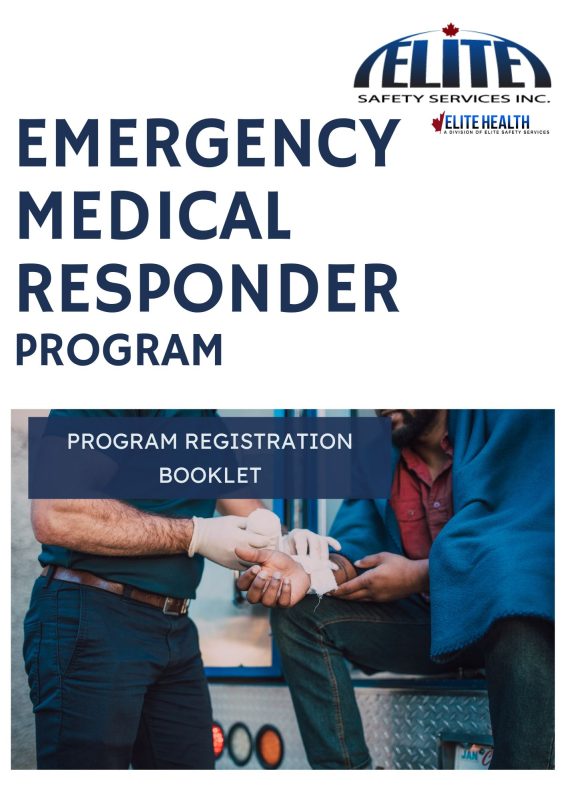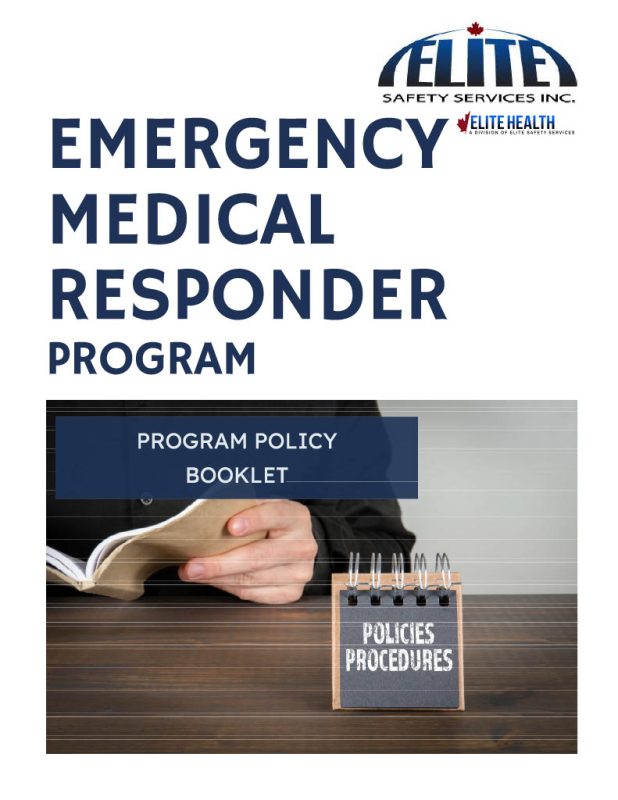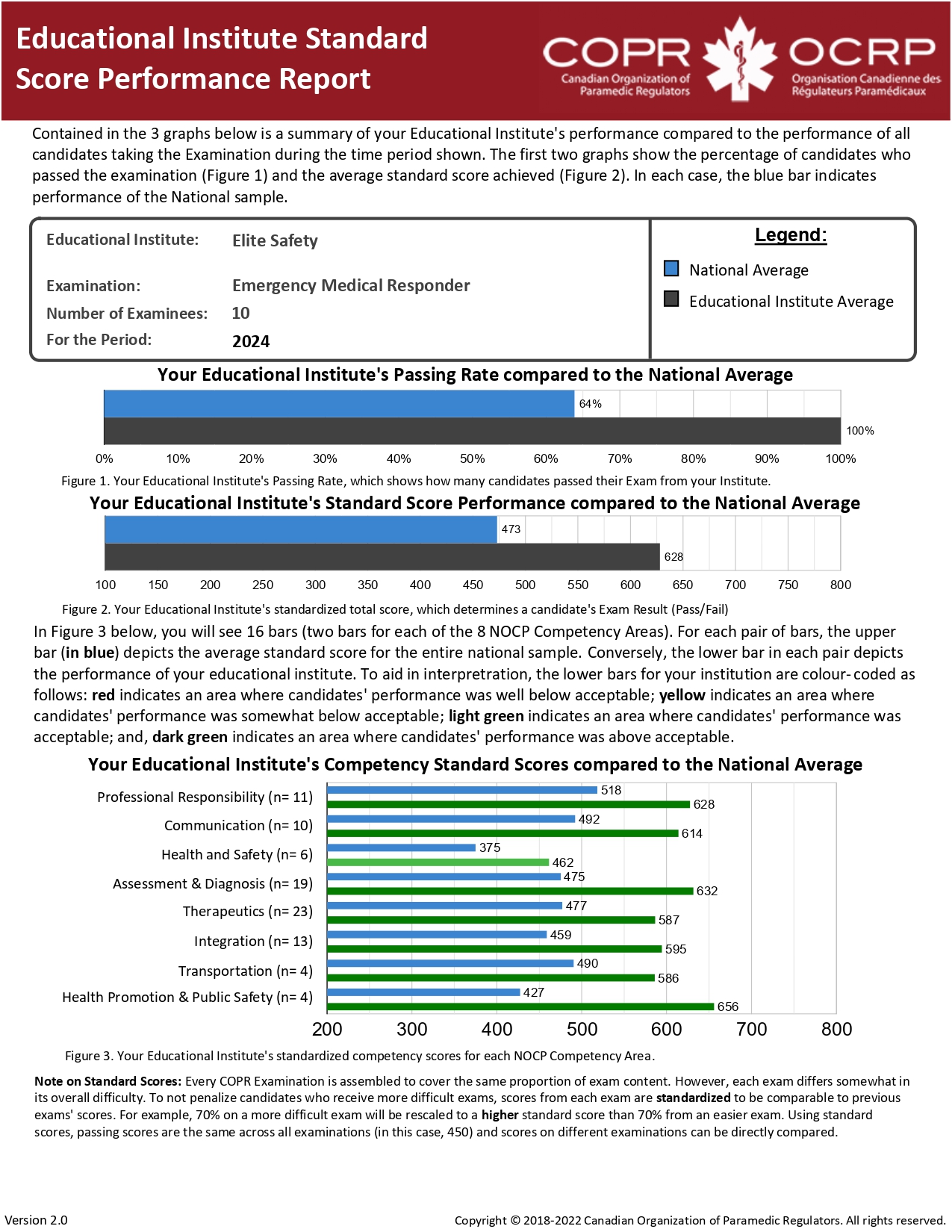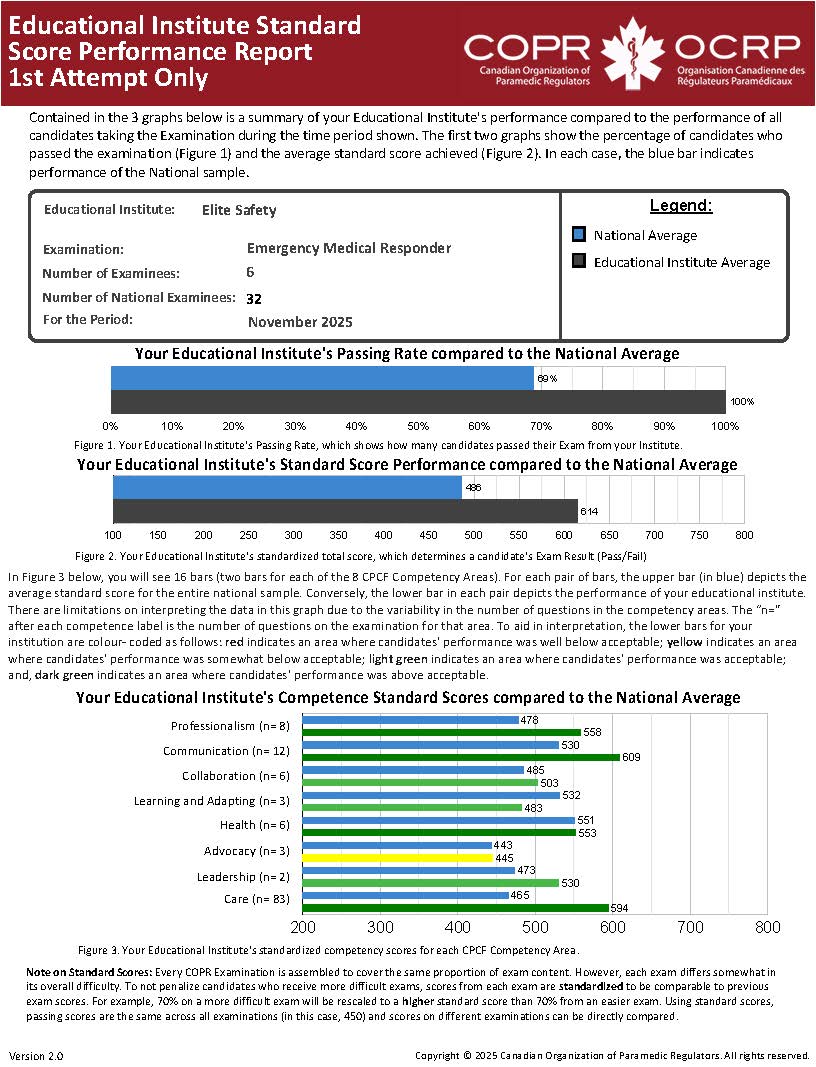Course
Emergency Medical Responder
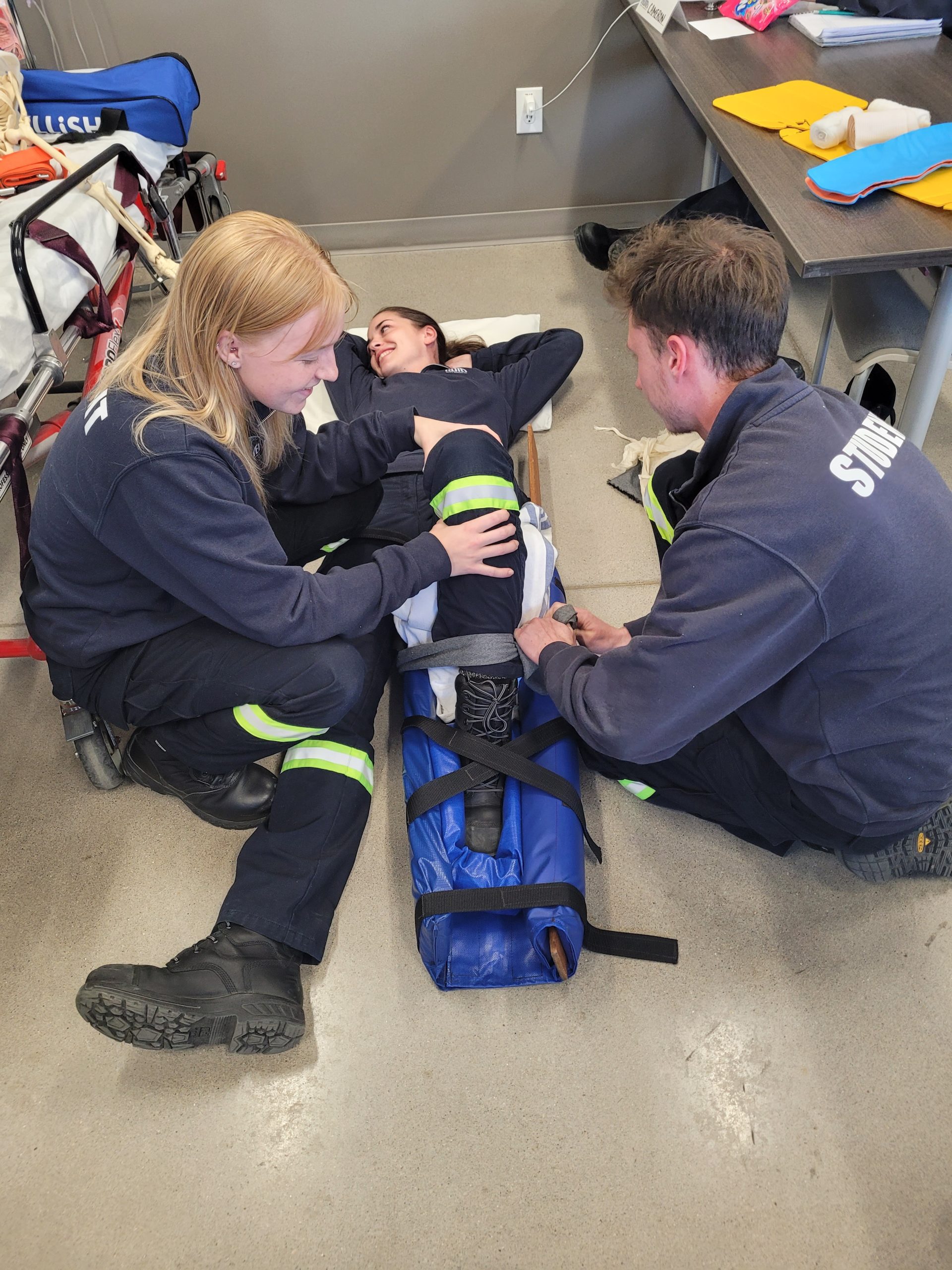
2026 COURSE INTAKE NOW OPEN:
BRANDON - February 24, 2026 - June 12, 2026 Blended Program
VIRDEN - March 16, 2026 - June 19, 2026 Blended Program
contact: training@elitesafetyservices.ca for more information, or to register!
What is an Emergency Medical Responder?
An Emergency Medical Responder (EMR) is a medical professional that works in a pre-hospital setting. The EMR designation is an entry-level paramedic that can perform basic medical care, trauma injury management, patient assessments, and take vital signs. EMR’s can work in industrial settings, Emergency Services Dispatch, Patient Transport, or Ground Emergency Response Services. Regardless of the setting, people that call for Paramedics to help them often have their lives depend on the quick decisions, knowledge, and skills of the EMR. The work of a paramedic can be both physically strenuous and emotionally stressful.
There are four different levels of Paramedics recognized nationally & five recognized in the Province of Manitoba
- Emergency Medical Responders (EMR)
- Primary Care Paramedics (PCP)
- Intermediate Care Paramedics (PCP-IC or ICP) *MB Specific; Additional Training Required*
- Advanced Care Paramedics (ACP)
- Critical Care Paramedics (CCP)
All levels can perform basic diagnostic testing such as blood pressure, pulse oximetry, glucometry, as well as administer medications. The higher the training level, the more advanced assessments, diagnostics tests, treatments, and medications are available to them. Manitoba’s ICP designation allows enhanced medication administration responsibilities and additional training to perform more advanced procedures.
What does an Emergency Medical Responder do?
While on shift, EMR’s typically:
- Check the ambulance and all equipment to make sure it is safe and ready to respond with.
- Respond to emergency calls for help for any number of medical problems or trauma.
- Assess a patient’s condition and decide on a treatment plan, partially based off care plans and standing orders.
- Get patients out of a variety of locations and environments to the ambulance where they can be transported.
- Perform care for the patient in the back of the ambulance while the ambulance is being driven to the hospital.
- Transfer the patient to the emergency department of a healthcare facility and report on their assessment and treatment to the facility staff.
- Document all aspects of their interactions and assessment on a Patient Care Report, which becomes a permanent part of the patient’s record.
- Clean and disinfect the ambulance as well as replace all equipment that was used.
- Provide emotional support to patients suffering from a mental health crisis.
Aside from a regular emergency response call, EMR's also frequently transport patients between health care facilities. Patients may need to be taken from one hospital to the next for additional tests or access to specialists that are not available at the sending hospital. They can also be taken back to a hospital closer to their home to recover after a procedure or for end-of-life care with terminal medical conditions. Paramedics participate in injury prevention programs, community paramedicine programs, and public education events. All of these involve going into the community and interacting with the public to improve their overall health and well-being.
What is the workplace of a Paramedic like?
Paramedics work both outdoors and indoors in all weather conditions. They work in urban and rural settings and respond to calls in every conceivable environment. One call may be for a patient with a heart condition while the next may be to an industrial accident; no two responses are the same.
A paramedic’s typical workplace is the ambulance, they take their office with them whenever they are called to help someone. They normally work in teams of two but will frequently need the help of other paramedics with more advanced training, specially trained response teams, air ambulances, and other agencies such as police and fire departments. Paramedics must be able to work with all the other responders and coordinate their actions closely during stressful situations.
Paramedics have a physically demanding job that involves a lot of bending, lifting, and kneeling. The physical aspect of the job is repetitive with frequent lifting and lowering of patients on stretchers as well as repeatedly getting into and out of the ambulance. Some of the lifting and moving involves awkward postures, repetitive force, or overexertion. There is little to no time for stretching or any kind of preparation before needing to be able to lift and move a patient, good physical health is important.
What are some Health and Safety issues for Paramedics?
Paramedics have a dangerous job; the exact risks vary depending on the specific response. Completion of training, following policies and procedures, and staying up to date on Continuing Education will help mitigate these below.
Potential Hazards include but are not limited to:
- Communicable diseases
- Injury from sharp medical instruments such as needles
- Exposure to hazardous materials and chemicals
- Back injuries or musculoskeletal disorders from lifting and moving patients and equipment
- Exposure to extreme weather conditions and temperatures
- Risk of injury from various work environments (Ex: working on the side of a highway, fires, unstable structures, large crowds, violent situations, and more)
- Motor vehicle incidents involving the ambulance
- Shift work and unpredictable shift end times resulting in fatigue
- Intense psychological stress and trauma
- Violence and harassment when dealing with hostile patients and bystanders
Should I become a Paramedic?
A career as a paramedic can be intensely rewarding while at the same time extremely stressful. It is important to be quick thinking, compassionate, driven, and enjoy problem solving. Emergency Responses often involve walking into the worst moment of someone's life and a paramedics action can make the difference between life and death. This is not the career for someone who wants to stand back and watch, or simply drive by.
What does it take to become a Paramedic?
Elite Safety Services Inc currently offers both Emergency Medical Responder and Primary Care Paramedic Programs.
Training to become an EMR includes instruction on assessing a patient’s condition and dealing with numerous medical conditions and trauma as well as emergency childbirth using all equipment in an ambulance, ambulance operations, basic medication administration, and lifting and moving. The course is approximately 320 hours in length.
Upon conclusion of formal training, EMRs need to write the COPR Entry to Practice Examination. Once the exam is passed; a Certificate of Practice with the College of Paramedics of Manitoba may be obtained.
Interested?
If the career of an EMR sounds like the right fit for you, please contact us with any questions or to begin your registration process. Our Registration Booklet is available below.
Interested in the PCP program instead? CLICK HERE
Resources:
For more information on costs and requirements of maintaining EMR/PCP certificates, as well as general information, please visit the following resources.
College of Paramedics of Manitoba https://collegeparamb.ca/
Paramedic Association of Manitoba https://www.paramedicsofmanitoba.ca/
Canadian Organization of Paramedic Regulators (COPR) https://copr.ca/
View our Registration Booklet HERE
View our EMR Policy Booklet HERE
Audience: Professionals in emergency medical care who may be responsible for initial assessments, the provision of safe and prudent care, and the transport of a patient to the most appropriate healthcare facility.
Pre-requisite(s): See Registration Package for Pre-requisites
Course Length: 328 Hours
Upcoming Courses
No upcoming dates are scheduled for this course.

